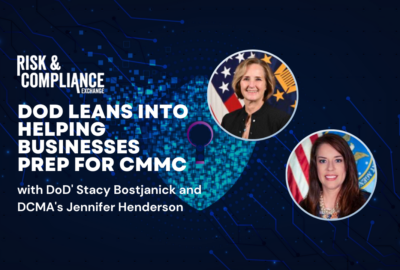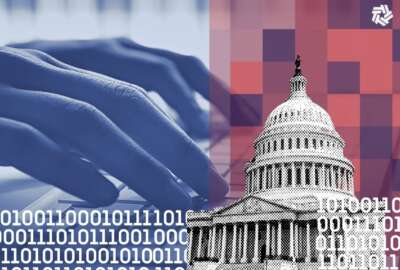Digital ants help fight cyber attacks
The Pacific Northwest National Laboratory, part of the Department of Energy, is developing digital ants -- yes, ants -- to help keep your agency\'s systems secu...
wfedstaff | June 3, 2015 1:18 am
Cybersecurity Update – Tune in weekdays at 30 minutes past the hour for the latest cybersecurity news on The Federal Drive with Tom Temin and Jane Norris (6-10 a.m.) and The Daily Debrief with Chris Dorobek and Amy Morris (3-7 p.m.). Listen live at FederalNewsRadio.com or on the radio at 1500 and 820 AM in the Washington, D.C. metro area.
By Dorothy Ramienski
Internet Editor
Federal News Radio
The Pentagon’s computers experience more than five thousand attacks every day, according to the Pacific Northwest National Laboratory, which is part of the Department of Energy.
The lab is currently working on unique ways to address such cybersecurity concerns with what it calls ‘digital ants’.
Dr. Deb Frinke is the Chief Scientist for Cyber Security Research at the lab and explained that the ants, and other interesting solutions, are needed because threats expand so quickly nowadays, it’s hard to keep up.
20 years ago, she added, one could count the number of cyberthreats on his or her hand. Now, however, there are millions of threats, with one being added each hour.
“Of course we need to continue to invest in what’s going on but, to me, investing only in touch and touch type of solutions and ‘Let’s run as fast as we can to stay ahead of the threat’ isn’t going to be sufficient. What we are doing at the Pacific Northwest National Lab is looking at some alternatives that might lead us to a little better future, which I think is what we all want.”
That need for new and different approaches is where the digital ants come in.
“The idea is that the digital ants can run around and kind of scurry through your network and clean up threats predictably before they occur. If you think about how ants get into everything and follow a little trail to the source of the food and bring that information back, we can use the same approach to try and find a cyber-threat on a system.”
If you’re reading this and feeling the hair on your arms starting to rise, you’re not alone. Frinke said, because the technology is new, some have expressed concerns about it. Others have simply said they don’t like bugs.
“If you think about the metaphor, it is something that’s under the radar. It doesn’t have to be managed directly. We’re using approaches from the human genome project, too, that help us find malware before it strikes. The same things that will let us better understand how people are related let us understand how malware is related. That helps us find it faster.”
The ants are just one potential solution that addresses all levels of attacks. Another major portion of cybersecurity these days, though, has to do with that inevitable human element.
“Another very important part of the picture is personal responsibility. Having the next generation and our current generation better understand how they’re part of the threat is a piece of the picture.”
When combined, new technology like the ants and more awareness could pack a pretty severe punch when it comes to battling in cyberspace. Frinke said, however, that there are certain challenges when it comes to introducing the ants, or any new solution.
“The difficulty is, of course, any kind of new technology takes awhile to accept. We’re starting to get more sophisticated, but I haven’t seen anything quite like our digital ants out there yet, and I would dearly love to see those types of things adopted. This is an area we’re going to need to invest in. Just like we need new roads from time to time, I think it’s time for a new cybersecurity support system.”
With discussions of cybersecurity often come talks about privacy. Frinke said she and her team at the lab take privacy very seriously and made sure their ants do, too.
“It’s very important that in our rush to secure our systems, we do not tread on the rights of the privacy of citizens. The nice thing about using some of these automated approaches is that you can build into them what they’re allowed to bring back and what people are allowed to see. It’s a little bit more clinical than having an individual leaf through your files and try to figure out whether you have a problem.”
The ants don’t just sniff out problems, either. Frinke explained that they can help with patching, too.
“Patching has gotten a lot more sophisticated over the years and we now have push patches — they come to us directly without us having to remember. . . . It happens automatically, and that’s good, but the problem is, it’s more predictable, and anything that’s predictable is something that can be taken advantage of by an opponent. Something that’s a little more random, like the ants . . . doesn’t make it as easy for an adversary to know when you have a patch there.”
Copyright © 2024 Federal News Network. All rights reserved. This website is not intended for users located within the European Economic Area.





